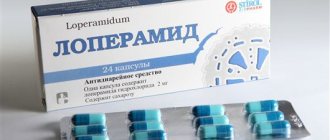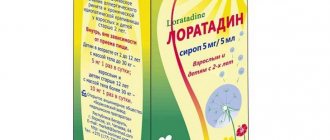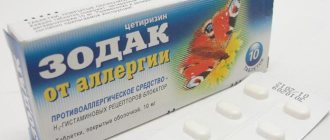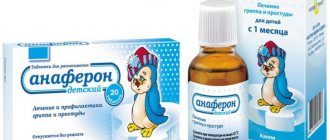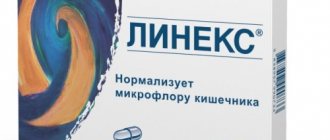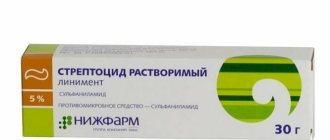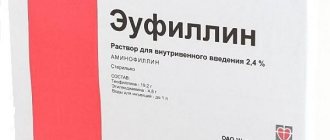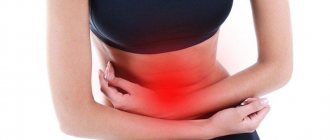The abdominal cavity contains vital organs such as the liver, stomach, pancreas, and intestines. Each of them is susceptible to certain diseases. The quality of our future life literally depends on how carefully we pay attention to the symptoms of discomfort or pain in the abdomen. Therefore, it is so important to be able to understand the elementary processes of your body in order to take preventive and therapeutic measures in a timely manner. It is because of the incorrect use of tablets for abdominal pain that side effects and other consequences occur. When choosing which medicine to take for an illness, you need to clearly understand the purpose of each of them.
- 6 Taking medications for abdominal pain
- 7 Medicines used for different types of abdominal pain
- 8 Treatment with folk remedies
- 9 People's reviews of remedies for abdominal pain
- 10 Videos on the topic: abdominal pain
Why does my stomach hurt?
Everyone has experienced abdominal pain at some point. The nature of abdominal pain can vary in intensity: acute spastic or dull muffled. And a person experiences a wide variety of sensations; the patient may feel colic, burning, bloating, spasms.
It is important to distinguish harmless pain from symptoms of serious pathologies.
At the same time, it is important to be able to distinguish relatively harmless discomfort, for example, due to excessive gas formation in the intestines, from symptoms of serious pathologies that sometimes require urgent surgical intervention.
https://youtu.be/v55BFBAJwwE
Main groups of drugs
When the stomach hurts due to increased gas formation, cramps, digestive disorders, reflux of stomach acid or bile into inappropriate parts of the gastrointestinal tract, doctors usually use the appropriate class of drugs that eliminate precisely these problems:
- myotropic antispasmodics (spasmalgesics) – have an antispasmodic and vasodilator effect on the smooth muscles of the stomach and intestines (Papaverine, Drotaverine, No-shpa, Spazgan, Spazmalgon, Trimedat);
- antacid drugs - treat acid-dependent gastrointestinal diseases, neutralize the effect of hydrochloric acid in gastric juice (Almagel, Gastal, Gaviscon, De Nol, Maalox, Omez, Omeprazole, Rennie);
- antisecretory antiulcer drugs - reduce the acidity of the stomach contents, inhibiting the mechanisms of hydrochloric acid secretion (Nolpaza, Famotidine);
- digestive enzymes - enzymes that break down complex food substances into simpler elements (Mezim, Pancreatin, Festal);
- analgesics - neutralize pain sensitivity, often simultaneously have an anti-inflammatory, antipyretic effect (Analgin, Baralgin, Diclofenac, Ibuprofen, Ketanov, Ketonal, Ketorol, Nise, Nimesil, Nurofen, Tempalgin)
- enterosorbents - drugs that absorb toxic substances that enter the human gastrointestinal tract from the outside (Activated carbon, Polysorb, Smecta, Enterosgel)
The effectiveness of each medicine depends on the correctly selected pharmacological group to eliminate the symptoms and manifestations of a particular disease or condition.
Forms of release of gastroenterological drugs
The state imparted to a medicinal raw material or product, according to the method of its use, in which the maximum therapeutic effect is achieved is a dosage form.
Depending on the needs and ease of use, drugs in gastroenterology have different forms of release: solid, liquid, soft. Often the same medicine is available in 2, 3 or more forms. This is necessary for practicality of use, depending on the required speed and efficiency of drug absorption. The speed of action is maximum for injections, suppositories, lozenges, and suspensions. Ordinary capsules and tablets work a little slower. The most popular forms of release of drugs used in gastroenterology:
- pills,
- powders,
- capsules,
- medicinal fees,
- candles,
- suspensions,
- gels and pastes,
- injections.
Depending on the method of administration, medications of all forms are divided into 2 classes: enteral and parenteral. The former are taken through the gastrointestinal tract, the latter bypassing the gastrointestinal tract (injections, inhalations, rubbing into the skin).
When a doctor prescribes medicine for pain in the stomach or other parts
Depending on the location, intensity, and nature of the pain, the doctor can, with a high degree of probability, determine the cause of the painful condition. In cases of mild or moderate food poisoning, or chronic problems with one or another organ of the gastrointestinal tract, patients are prescribed drug therapy at home. The causes of abdominal pain in the vast majority of cases are:
- Foodborne illness (food poisoning).
- Symptoms: nausea and vomiting, cramps or cramps in the stomach or intestines, diarrhea, flatulence, elevated body temperature, general weakness, chills;
- The doctor will prescribe: enterosorbents (Activated carbon, Polysorb), antidiarrheal (Smecta).
- Gastritis, stomach ulcer.
- Symptoms: spastic pain in the epigastrium, belching, nausea, heartburn, vomiting, feeling of thirst, disturbances of appetite and stool;
- the doctor will prescribe: antacids (Almagel, Maalox), antisecretory drugs (Nolpaza, Famotidine), antispasmodics (Drotaverine, No-shpa).
- Indigestion or enzyme deficiency.
- Symptoms: discomfort, pain, heaviness in the stomach after eating. A few hours after eating, flatulence, bloating, and discomfort in the lower abdomen appear;
- The doctor will prescribe: enzymes and choleretic drugs (Festal, Allochol, Pancreatin), antifoam agents (Espumizan).
- Chronic cholecystitis.
- Symptoms: dull burning pain under the right rib, radiating to the back, after eating fatty, fried, spicy foods;
- the doctor will prescribe: enzyme (Mezim, Pancreatin), and antacid (Phosphalugel, Maalox) drugs, as well as choleretic (Allohol).
- Chronic pancreatitis.
- Symptoms: epigastric pain, heaviness after eating, bloating, inability to digest certain foods, belching, loose stools;
- The doctor will prescribe: for exocrine insufficiency, in the non-acute stage, enzymatic drugs (Panzinorm, Mezim), analgesics (Baralgin), antispasmodics (Duspatalin, Papaverine).
- Enteritis.
- Symptoms: loose, watery stools, bloating and rumbling in the abdomen, vomiting, white coating on the tongue, general weakness;
- The doctor will prescribe: enzymes (Pancreatin, Festal), sorbents (Enterosgel, Activated Carbon, Polysorb), antidiarrheals (Smecta).
- Menstrual pain in women.
- Symptoms: cramping pain in the lower abdomen, radiating to the lower back, nausea, weakness, bloating during menstruation;
- the doctor will prescribe: antispasmodics (Spazmalgon, Noshpa), analgesics (Ibuprofen, Analgin, Nimesil, Ketanof).
- Irritable bowel syndrome (IBS).
- Symptoms: chronic pain and discomfort in the intestines, flatulence, rumbling, frequent urge to go to the toilet or constipation, belching, heartburn;
- The doctor will prescribe: antispasmodics (Trimedat), antidiarrheals (Smecta), neuroleptics (Eglonil).
An accurate diagnosis will be made by a gastroenterologist.
Any acute unbearable pain in the abdomen of unknown origin, if it is not relieved by analgesics, or goes away, but soon returns, at the same time causing a sharp deterioration in the general condition of the body, fever and other symptoms - this is a signal to immediately seek medical help.
Tablets for painful menstruation
In women, in many situations, pain during the menstrual cycle is the most common.
According to doctors, this type of discomfort has various causes, but the main one will be hormonal imbalance.
Progesterone and estrogen are the main regulators of the menstrual cycle, therefore failures in their production result in abdominal pain, which can only be eliminated by taking pills.
Typically, a characteristic feature of this condition will be intense pain associated with other disorders in the functioning of the body: diarrhea, high fever, vomiting, bleeding.
Tablets taken to eliminate pain will not provide a lasting effect when the provoking factor for this condition is various pathological processes in the organs of the genitourinary system, growths and diseases of the female genital organs.
In such a situation, pills designed to relieve abdominal pain are not able to eliminate the main cause.
When discomfort occurs due to hormonal imbalance or inflammatory processes, pain can be eliminated using non-steroidal drugs recommended by a doctor for use 2-3 days before the start of the menstrual cycle.
This can enhance the effect of the medicine. This subgroup of medications includes Ibuprofen, Naproxen, Ketoprofen, Diclofenac, Indomethacin, and Piroxicam.
Contraindications for the use of the above drugs are susceptibility to some components of the drug, acute forms of gastrointestinal diseases, kidney and liver diseases, pregnancy and lactation.
The second group of drugs that help eliminate abdominal pain are considered antispasmodics: No-shpa, Drotaverine, Papaverine, Halidor, Spazmalgon, Spazgan.
Experts prescribe these tablets in all cases, except for the patient having glaucoma, renal failure, an allergic reaction, or low blood pressure.
Among the analgesics during the menstrual cycle, Baralgin, Analgin, Piretin, Novalgin, Ditsinon and others eliminate pain.
Side effects of analgesic tablets. Contraindications
When taking analgesics, strictly follow the instructions
As a rule, when there is a painful symptom, and abdominal pain is no exception, painkillers are used. They are affordable and freely sold in every pharmacy; no prescription is needed. Most analgesics in your home medicine cabinet belong to the group of nonsteroidal anti-inflammatory drugs (NSAIDs). In addition to the analgesic effect, they have an antipyretic and anti-inflammatory effect. Despite the familiarity of these drugs, their uncontrolled use does not leave its mark on the functioning of the body . NSAIDs cause a number of side effects:
- NSAIDs tend to increase the level of hydrochloric acid in the stomach while decreasing the amount of protective mucus. This may result in nausea, discomfort in the epigastric region, and bowel irregularities.
- With long-term use of painkillers, ulcers and erosions can form in the gastrointestinal tract.
- The thickness and coagulability of blood increases. In people predisposed to blood clots, such processes can increase the risk of cardiovascular disease.
- The kidneys and blood circulation in them suffer. This provokes fluid retention in the body, swelling, and increased blood pressure.
- Neurological disorders may occur: neuritis, dizziness.
- Nonsteroidal anti-inflammatory drugs suppress the maturation of certain types of leukocytes, which leads to a sharp decrease in immunity.
- As a result of the combination of analgin in the stomach with certain substances, carcinogens are formed and the likelihood of cancer increases.
- Aspirin thins the blood and can sometimes cause bleeding.
- NSAIDs affect tissue dehydration and, in particular, drying of the eye mucosa. As a result, people who constantly take painkillers are more susceptible to vision deterioration.
Painkillers NSAIDs are contraindicated if the following conditions occur:
- ulcers of the gastrointestinal tract;
- pregnancy and breastfeeding;
- individual sensitivity to the components of the drug;
- bronchial asthma;
- problems with blood clotting.
You should also not abuse painkillers in children. Moreover, it is forbidden to engage in any self-medication. Drugs for treating a child are prescribed exclusively by a pediatrician after a visual examination and diagnosis.
Contraindications
Contraindications to taking pills:
- Analgesics should not be taken for blood diseases. It is highly not recommended to take tablets from these groups during pregnancy and lactation.
- Nonsteroidal anti-inflammatory drugs are prohibited for use in case of problems with the kidneys, liver, during pregnancy, lactation, and in case of erosive and ulcerative lesions of the gastrointestinal tract.
- Antacid medications also have a number of contraindications. Tablets of this group should not be taken by people with impaired renal or liver function.
- Antispasmodic drugs are not suitable for people with pathologies of the large intestine, pregnant women, during lactation, Crohn's disease, tuberculosis.
- Tablets containing enzymes are prohibited for use by people with acute forms of gastritis, pancreatitis, as well as cystic fibrosis.
Taking medications for abdominal pain
When the stomach hurts, a person’s natural reaction is to try to calm the body’s reaction by any means. Often forgetting that there is a possibility of harming other organs and systems. To minimize possible harmful consequences, you need to remember the following rules for taking medications for abdominal pain:
- take medications according to the instructions (adhere to the recommended dose and time of taking the medication);
- follow the doctor’s instructions and do not self-medicate;
- follow a diet during treatment (eat small meals, exclude junk food);
- if, despite taking the medicine, relief does not occur or the patient’s condition worsens, it is necessary to urgently seek medical help;
- Be wary of the use of drugs by children and the elderly, for whom only a professional doctor can prescribe treatment.
In addition to the above, you should always remember the existence of the concept of “acute abdomen”. This is a complex of symptoms indicating a pathology of the abdominal organs, which is expressed in acute severe pain and an excessively tense peritoneal wall. This includes conditions such as appendicitis, perforation of a stomach ulcer, intestinal perforation, and the consequences of an ectopic pregnancy. This pathological condition can threaten the patient’s life and requires immediate response in the form of seeking medical help.
The table below provides an indicative list of medications used for different types of abdominal pain.
Complex drugs
In recent years, painkillers containing several active ingredients have become more popular. They allow one tablet not only to relieve muscle spasms and reduce pain, but also to eliminate its cause. For example, non-hormonal anti-inflammatory drugs-antispasmodics relax muscles, relieve inflammation and heat, and relieve pain. The most famous complex medicines are:
- Novigan is used for renal and intestinal colic, dysmenorrhea, migraine and joint pain.
- "Spazmalgon" is effective for various pains and spasms, fever, and high blood pressure.
- The drug "Trigan" contains paracetamol and dicycloverine and relieves spastic pain well.
- "Pentalgin" is a very popular pain reliever containing five active ingredients that are effective not only for pain and spasms, but also for fever.
Medicines used for different types of abdominal pain
Food poisoning
Smecta
Release form: powder for suspension.
Active ingredient: dioctahedral smectite.
Action: adsorbs bacteria and viruses in the gastrointestinal tract, stimulates the production of protective mucus.
Contraindications: hypersensitivity, intestinal obstruction.
Age restrictions: no.
Price: from 148 rub.
Polysorb
Release form: powder for preparing a suspension.
Active ingredient: colloidal anhydrous silicon dioxide.
Action: binds and removes toxins and allergens from the body.
Contraindications: individual intolerance, peptic ulcer in the acute stage, ulcers and intestinal erosions.
Age restrictions: up to 1 year.
Price: from 120 rub.
Activated carbon
Release form: tablets, powder.
Active ingredient: activated carbon.
Action: adsorbs (absorbs) gases, alkaloids, toxins.
Contraindications: ulcerative lesions of the gastrointestinal tract, gastric bleeding.
Age restrictions: no.
Price: from 5 rub.
From heaviness and overeating
Festal
Release form: pills.
Active ingredients: pancreatin, bile components, hemicellulase.
Action: facilitates the digestion and absorption of fats, proteins, carbohydrates and plant fibers.
Contraindications: liver inflammation, obstructive jaundice.
Age restrictions: no, but children's dosages are determined by the doctor.
Price: from 143 rub.
Mezim forte 10000
Release form: coated tablets.
Active ingredients: pancreatin, lipase, amylase, protease.
Action: compensates for insufficient external secretion of the pancreas.
Contraindications: intolerance to the components of the drug, acute pancreatitis, exacerbation of chronic pancreatitis.
Age restrictions: use in pediatrics only as prescribed by a doctor.
Price: from 200 rub.
Functional gastrointestinal disorders (dyspepsia)
Trimedat
Release form: tablets.
Active ingredient: trimebutine.
Action: normalizes intestinal motility and functions of the gastrointestinal tract.
Contraindications: hypersensitivity to the components.
Age restrictions: up to 3 years.
Price: from 238 rub.
Gastritis, ulcer
Almagel
Release form: suspension.
Active ingredients: aluminum hydroxide, magnesium hydroxide, sorbitol.
Action: locally neutralizes excess gastric juice; optimizes the amount of hydrochloric acid.
Contraindications: severe kidney disease, Alzheimer's disease, intolerance to the components of the drug.
Age restrictions: up to 1 year.
Price: from 203 rub.
Nolpaza
Release form: enteric tablets.
Active ingredient: pantoprazole.
Action: stops the release of hydrochloric acid in the stomach, exerting a specific effect on the proton pump of parietal cells.
Contraindications: individual sensitivity, neurotic dyspepsia, etc.
Age restrictions: up to 18 years.
Price: from 281 rub.
Enterosgel
Release form: paste for internal use.
Active ingredient: methyl silicic acid hydrogel.
Action: effectively absorbs products of incomplete metabolic reactions, toxic substances and radionuclides from the blood and intestinal contents.
Contraindications: acute intestinal obstruction.
Age restrictions: no.
Price: from 371 rub.
Chronic cholecystitis
Allohol
Release form: coated tablets.
Active ingredient: dry bile components, garlic extract, nettle extract, activated carbon.
Action: helps to increase the volume of bile secretion, increases the secretion of enzymes by the gastrointestinal tract, their motility, and prevents putrefactive and fermentative processes in the intestines.
Contraindications: acute hepatitis, acute fatty degeneration of liver cells, obstructive jaundice.
Age restrictions: no.
Price: from 16 rub.
Drotaverine
Release form: tablets, injection solution.
Active ingredient: drotaverine.
Action: has a relaxing effect on smooth muscles, eliminates spasms, expanding the lumen of blood vessels, and promotes the rapid penetration of oxygen into tissues.
Contraindications: intolerance to individual components of the drug. Severe heart failure, significantly low blood pressure, etc.
Age restrictions: up to 2 years.
Price: from 60 rub.
Chronic pancreatitis
Pancreatin
Release form: tablets, dragees, capsules.
Active ingredient: pancreatin.
Action: helps break down carbohydrates, fats and proteins, which ensures their more complete absorption in the intestines.
Contraindications: acute pancreatitis, exacerbation of chronic pancreatitis, hypersensitivity to the components of the drug.
Age restrictions: no.
Price: from 22 rub.
No-shpa
Release form: tablets, injection solution.
Active ingredient: drotaverine.
Action: has a pronounced antispasmodic (relieving spasms) effect.
Contraindications: benign prostatic hyperplasia, increased intraocular pressure.
Age restrictions: up to 2 years.
Price: from 57 rub.
Intestinal colic
Papaverine
Release form: powder, tablets, injection solution.
Active ingredient: papaverine.
Action: has the effect of reducing the tone and reducing the contraction of smooth muscles, due to its vasodilator and antispasmodic effect.
Contraindications: pathologies of atrioventricular conduction.
Age restrictions: up to 6 months.
Price: from 12 rub.
Espumisan
Release form: capsules, emulsion.
Active ingredient: simethicone.
Action: prevents the formation and destroys gas bubbles in various parts of the gastrointestinal tract, has the function of an antifoam.
Contraindications: intolerance to individual components of the drug.
Age restrictions: up to 6 years only in the form of an emulsion.
Price: from 264 rub.
Menstrual pain
Spasmalgon
Release form: tablets, injection solution.
Active ingredients: metamizole sodium, pitofenone, fenpiverinium bromide.
Action: has an analgesic effect, as well as anti-inflammatory and antipyretic effects.
Contraindications: intolerance to certain ingredients of the drug, disruption of the hematopoietic system, etc.
Age restrictions: up to 15 years.
Price: from 99 rub.
Tempalgin
Release form: tablets.
Active ingredients: metamizole sodium, tempidone.
Action: has a calming and analgesic effect.
Contraindications: low blood pressure, severe liver or kidney failure, etc.
Age restrictions: up to 15 years.
Price: from 97 rub.
Please pay attention! The information is provided for informational purposes only. Each specific case requires individual medical consultation.
A short list of the best painkillers - Table
| Place | Name of tablets | Characteristics in the rating | Price, rub.) |
| The best painkillers for headaches | |||
| 5 | Aspirin Express | Belongs to the group of non-steroidal anti-inflammatory drugs (NSAIDs) and has analgesic, antipyretic and anti-inflammatory effects | 82-501 |
| 4 | MIG 400 | Non-steroidal anti-inflammatory drug (NSAID). MIG® is a modern drug from Germany for getting rid of headaches and other types of pain. MIG® is ready to act in about 10 minutes! | 83-153 |
| 3 | Citramon P | Analgesic, blood thinning, antipyretic and anti-inflammatory drug. Used for headaches and colds | 12-90 |
| 2 | Ibuprofen | The drug, a non-steroidal anti-inflammatory drug from the group of propionic acid derivatives, has an analgesic and antipyretic effect | 19-168 |
| 1 | Nurofen | NSAIDs. Has a rapid, targeted effect against pain (analgesic), antipyretic and anti-inflammatory effects | 99-332 |
| The best painkillers for toothache | |||
| 5 | Baralgin M | An analgesic non-narcotic drug, a pyrazolone derivative, non-selectively blocks COX and reduces the formation of prostaglandins from arachidonic acid. Prevents the conduction of painful extra- and proprioceptive impulses along the Gaulle and Burchard bundles, increases the threshold of excitability of the thalamic centers of pain sensitivity, increases heat transfer | 118-225 |
| 4 | Nise | NSAIDs from the sulfonanilide class. It is a selective competitive inhibitor of COX-2, inhibits the synthesis of prostaglandins at the site of inflammation. The inhibitory effect on COX-1 is less pronounced (less likely to cause side effects associated with inhibition of prostaglandin synthesis in healthy tissues). Has anti-inflammatory, analgesic and pronounced antipyretic effect | 224-286 |
| 3 | Nimesil (powder) | Non-steroidal anti-inflammatory drug from the sulfonamide class. Has anti-inflammatory, analgesic and antipyretic effects | 269-672 |
| 2 | Ketanov | NSAID, derivative of pyrrolysine-carboxylic acid. Has a pronounced analgesic effect, also has anti-inflammatory and moderate antipyretic effects | 65-222 |
| 1 | Ketorol | Being a non-steroidal anti-inflammatory drug, it has an analgesic, antipyretic and anti-inflammatory effect | 64-376 |
| The best painkillers for joint and muscle pain | |||
| 5 | Diclofenac | A non-steroidal anti-inflammatory drug with an analgesic effect. In rheumatic diseases, the anti-inflammatory and analgesic effect of diclofenac helps to significantly reduce the severity of pain, morning stiffness, and swelling of the joints, which improves the functional state of the joint. For injuries, in the postoperative period, diclofenac reduces pain and inflammatory swelling | 18-82 |
| 4 | Nimesulide | A drug, a non-steroidal anti-inflammatory drug from the sulfonamide class. Its approved indications are the treatment of acute pain, symptomatic treatment of osteoarthritis, and primary dysmenorrhea in adolescents and adults over 12 years of age. It can be used to treat pain, including period pain | 67-184 |
| 3 | Xefocam | A drug that helps get rid of pain and inflammation. This remedy has a wide spectrum of action, it helps relieve toothache and headache, pain in women during menstruation, in the post-traumatic and postoperative period, and others. In addition, this medication is used to relieve the inflammatory process in the formation of serious pathologies, including chronic diseases | 245-511 |
| 2 | Papaverine | The drug has sedative (calming) and analgesic properties, relieves various types of muscle and vascular spasms, reduces the excitability of the heart and helps lower blood pressure. Has no particular effect on the nervous system | 16-52 |
| 1 | Next Uno Express (capsules) | Has a rapid, targeted effect against pain (analgesic), antipyretic and anti-inflammatory effects | 137-250 |
| The best painkillers for menstruation | |||
| 5 | Pentalgin | A unique combination drug for complex action against pain of various origins | 95-204 |
| 4 | Spazgan | An analgesic and antispasmodic at the same time, according to its pharmacological properties, it is a combination drug. In the affected body it has antipyretic, analgesic, antispasmodic, analgesic effects | 120-179 |
| 3 | Revalgin | Spasmoanalgesic. The drug contains the non-narcotic analgesic metamizole sodium (analgin), the myotropic antispasmodic drug pitofenone hydrochloride and the anticholinergic drug fenpiverinium bromide. Metamizole is a derivative of pyrazolone. It has analgesic, antipyretic and anti-inflammatory effects. Pitophenone, like papaverine, has a direct myotropic effect on the smooth muscles of internal organs and causes its relaxation | 112-480 |
| 2 | Drotaverine | An antispasmodic, that is, a drug that relieves spasms of smooth muscles. This eliminates the pain caused by this spasm. | 21-90 |
| 1 | Novigan | Medicinal product, purpose: for headaches, toothache and muscle pain, for spasms, for migraines, for menstrual pain, for joint pain | 106-177 |
Treatment with folk remedies
Traditional methods and methods of treatment can only be used in addition to the main traditional therapy , after diagnosis by the attending physician and with his consent. However, if the attending physician has given his consent, you can safely use the experience of traditional treatment accumulated over centuries for various ailments.
Grandma's herbal recipes will help with heaviness in the stomach
Grandma’s herbal recipes will help with heaviness and overeating:
- decoction of calamus roots (3 tablespoons of calamus roots per 0.5 liters of water, boil for half an hour, cool, strain. Take 100 ml 3 times a day before meals);
- chamomile infusion (steam 1 tablespoon of flowers with 250 ml of boiling water, strain after 30 minutes. Take 2-3 tablespoons 3-4 times a day before meals).
For the treatment of the liver and gallbladder, from the point of view of traditional medicine, they are effective:
- choleretic and anti-inflammatory herbal mixtures (chamomile, calendula, milk thistle, St. John's wort, immortelle, tansy: 1 tablespoon of the mixture in 1 cup of boiling water, leave for 45 minutes, cool, strain. Take 1/3 cup 3 times a day before meals) ;
- homeopathic remedies - for example, the effect on the chemical composition of gallstones with remedies with a similar composition.
For the treatment of pancreatitis, people use:
- herbal infusions (St. John's wort, mint, motherwort: 1 tbsp of crushed herb in 1 cup of boiling water, leave for 30 minutes, cool, strain. Take warm, 1/3 cup 3 times, half an hour before meals.);
- infusion of Sophora japonica (2 tablespoons of dried flower powder, pour 1 glass of boiling water, leave for 2 hours, strain. Take 1–2 tablespoons 3 times a day after meals.);
- a decoction of dandelion roots (use 1 tablespoon of powder for one glass of boiling water, leave for 1 hour, strain. Take ¼ glass 3 times half an hour before meals.);
- Tibetan tea (St. John's wort, birch buds, immortelle, chamomile: 1 tablespoon of a mixture of herbs goes to 0.5 liters of boiling water, leave for 30 minutes, strain. Take 1 glass of warm drink with honey before bed.).
Peptic ulcer disease of the gastrointestinal tract should recede if you take:
- white cabbage juice (drink 1 glass of freshly squeezed juice 3 times a day an hour before meals. The course of treatment is 1 month);
- potato juice (freshly squeezed juice, take ½ glass 2 times a day before meals);
- onion juice (dilute the juice with water in a 1:1 ratio, drink 30 minutes before meals, 2 times a day);
- celery infusion (2 tablespoons of finely chopped roots per 1 glass of cold water; leave for 2 hours, strain. Take 1/3 glass three times a day before meals.);
- aloe juice (2 times a day, 30 minutes before meals, chew a piece of aloe leaf about 4 cm. Swallow the juice, and you can spit out the fibers.).
Intestinal colic will subside after the following remedies:
- motherwort infusion (1.5 tablespoons of herb per 1 glass of boiling water, leave for 2 hours, strain. Take 3-4 times a day, 1 tablespoon 30 minutes before meals.);
- infusion of oregano flowers (1 tablespoon of flowers per 1 cup of boiling water, leave for 15 minutes, strain. Take warm, 0.5 cups 3 times a day before meals.);
- ginger tea (0.5 teaspoon of root per 1 glass of boiling water. Drink warm 2-3 times a day, 1 glass.);
- lavender tea (1 tablespoon of lavender per 200 ml of boiling water, leave for 15 minutes, strain. Take 2-3 times a day, 1 glass.).
Food poisoning (food poisoning) is effectively treated, according to traditional healers:
- decoction of dill with honey (1 teaspoon of dry dill per 1 glass of water, boil for 20 minutes, cool, strain, dilute with boiled water to the original volume. Drink with the addition of 1 tablespoon of honey, 4 times a day, 0.5 cups .);
- tea from marshmallow flowers and leaves (pour 2 teaspoons of leaves into 1 glass of hot water, leave for 10 minutes. Drink in small sips throughout the day.);
- infusions of rowan and rose hips (1 tablespoon of a mixture of rowan and rose hips per 200 ml of water, boil for 6–7 minutes, leave for 1 hour, strain. Drink 3 times a day, 0.5 cups in between meals.).
In parallel with the use of traditional treatment recipes, you need to adhere to a diet, excluding foods that are prohibited, in specific cases, and eating small portions.
People's reviews of remedies for abdominal pain
We all have different stomachs and therefore some people have heartburn after eating certain foods, while others have it normal. I just can’t understand my stomach; if I eat fried potatoes in sunflower oil, then everything is fine, but if I eat some salads from winter preparations, I’ll definitely get severe heartburn. Gastal always comes to my aid in such situations. This remedy has been tested by me for years. For mild signs of heartburn, I dissolve one tablet and everything immediately returns to normal, but if I’ve gone too far with fatty foods, I’ll have to eat two or three. Gastal can be taken no more than twelve tablets per day, one or two at an hourly interval. Gastal also has side effects - vomiting, nausea, diarrhea. But somehow I haven’t observed anything like this in myself. Yes, and I take it only when necessary. This antacid drug is good, effective and not expensive, so I will recommend it. But still, consult your doctors first.
angel46
https://otzovik.com/review_2349081.html
Try herbal tea. For one-time relief, you can drink a cup of tea with peppermint, chamomile or sweet dill. Such herbs reduce the accumulation of gases in the stomach.
Lyudmila
https://otvet.mail.ru/question/20796696
They say that abdominal pain cannot be suppressed with painkillers... But sometimes it is IMPOSSIBLE to do without it!!!! No-shpa. An effective remedy that is always in my first aid kit for EVERY occasion!!!
Marisabel'ka
https://irecommend.ru/content/govoryat-bol-v-zhivote-nelzya-glushit-obezbolivayushchimi-tabletkami-no-inogda-bez-etogo-obo
Antispasmodics in the treatment of intestines
Antispasmodics are special drugs whose action is aimed at relieving intestinal spasms (its smooth muscles). Most often, spasms occur due to various organ diseases, PMS, or poor nutrition. Antispasmodics have a relaxing effect on the intestinal muscles and thereby reduce pain. Most often, spasms occur with an ulcer in any part of the intestine or problems with the biliary system.
Main reasons for use
Pain in one of the intestinal sections can occur not only due to any pathology of the organs; various, quite everyday problems are also possible:
- constipation;
- diarrhea;
- bloating;
- poisoning with low-quality products or toxins.
In this case, many people try, of course, to solve the main problem first, but not everyone takes antispasmodics. There is no need to endure pain! If a person is afraid that excessive use of medications will negatively affect health, then it is better to give preference to those medications that contain a large number of natural ingredients (herbs).
Classification of medications
Antispasmodics are usually divided into groups depending on various criteria. Let's look at the most important of them.
Origin:
- artificially derived drugs;
- natural (mint, chamomile, oregano, belladonna, lovage, tansy).
Natural antispasmodics are traditionally considered more harmless to the intestines, they have fewer contraindications, but they should still be taken with caution, since there are still certain side effects.
Mechanism of action:
- neurotropic. Such drugs affect the neurons that transmit impulses to the intestinal muscles. (buscopan, atropine, aprofen, scopolamine);
- myotropic. They act directly on the muscle fibers of the corresponding organ, relaxing them. Almost all such drugs for the intestines are based on No-shpa (mebeverine, halidor, hymecromone, papaverine).
In other words, antispasmodics make changes to the functioning of the intestinal muscles themselves or block the transmission of nerve impulses to it.
Complex medications are often used to help not only relieve spasm at the site of its occurrence, but also help relax tense heart muscles and relieve spasms of the arteries and blood vessels of the brain. (Baralgin, Spazmalgon). They contain not only components that relieve spasms, but also painkillers.
Release form:
- tinctures (mint);
- suppositories (papaverine);
- granules for diluting solutions (plantacid);
- drops (valoserdin);
- capsules (Sparex);
- tablets (often antispasmodics are produced this way - no-shpalgin, driptan, spasmonet-forte, besalol);
- ampoules (dibazol, no-spa) - intended for subcutaneous administration (intravenous or intramuscular injections).
Contraindications for use
Absolutely all antispasmodics have a number of contraindications. The interesting thing is that it doesn’t matter at all whether these are medications for stomach pain, headaches or any other spasm. Contraindications will be absolutely the same due to the fact that the drugs have an effect on the entire body as a whole.
Antispasmodics are strictly prohibited for use when:
- Crohn's disease;
- tuberculosis;
- some types of colitis;
- microbial infections of any part of the gastrointestinal tract.
It is also necessary to consult a doctor before taking the drug if you have any pathologies of internal organs or gastrointestinal diseases.
Before use, it is necessary to carefully study the composition of the drug, since in medical practice there have often been cases when a patient has an individual intolerance to one of the components included in the composition. In this case, special attention should be paid to medicines based on herbal components. They are even more likely to cause allergic reactions than synthetic drugs.
Additional recommendations
As the instructions and advice of many doctors say: “In some cases, a drug should be taken only if the benefit from its effect significantly outweighs the possible risk.” This applies in particular to the use of such medications during pregnancy, lactation and children.
If we talk about breastfeeding, then while taking such medications it is necessary to stop breastfeeding until the remnants of the drug are removed from the blood. When it comes to taking the drug by children, it is necessary to strictly follow the instructions, which stipulate the exact specific dosage for each age.
All the same, in all these cases it is necessary to consult a doctor and discuss each specific case separately.
The most risky drugs
Doctors separately identify two drugs that have many more contraindications than others and therefore should be taken with extreme caution:
- Papaverine. As carefully as possible, slowly, in small doses and only under the supervision of a doctor, it can be used by elderly and weak patients, as well as those suffering from various pathologies of the kidneys, liver, adrenal glands, prostate gland, bladder;
- Drotaverine. It is almost always prohibited for use in cases of atherosclerosis, renal or liver failure, cardiac disorders, and pressure surges. The drug can also have a negative effect on concentration, therefore, during the period of its use, it is not recommended to drive or engage in any other dangerous activity that requires a person to concentrate, react well and concentrate.
The same can be said about other drugs that contain the above components.
Myotropic drugs
These products are considered quite gentle and were developed specifically for relatively frequent use. Yes, they do not cause any special complications, but at the same time they should not be overused. Nevertheless, such medications are an ideal solution for eliminating menstrual pain, cramps and constipation (especially common in older people).
Their main effect is to relax the muscles precisely at the location of the spasm itself.
The most popular among this group of drugs is Papaverine. With long-term use, it can have a relaxing effect on the abdominal organs, as well as on the heart muscle, thereby helping to prevent heart attacks and strokes.
Folk remedies
If the spasms are not too pronounced, then it is recommended to use more gentle means, namely herbal preparations and tinctures, which can also be purchased at the pharmacy:
- dill and dill water. It not only has a choleretic effect, but also helps solve the problem of bloating and promotes the normal discharge of accumulated gases. It is used even during pregnancy or for small children (for colic in newborns);
- sagebrush. Not only relieves spasms of all parts of the gastrointestinal tract, but also helps improve digestion, the functioning of internal organs, and improves appetite;
- peppermint. Indicated not only for spasms, but also for vomiting, nausea, stomach upsets, and inflammation of the mucous membrane. It has not only antispasmodic, but also antiseptic properties.
Main signs of overdose
There are still cases of overdose with such drugs. The most dangerous thing is that this does not mean that the person has exceeded the daily allowable limit. Sometimes in individual cases, in simple terms, that dose is more than enough for the body to become oversaturated. In such a case, you need to rinse your stomach and consult a doctor as soon as possible.
Overdose can manifest itself in different ways:
- allergies (skin rashes, itching, Quincke's edema);
- nausea, vomiting, constipation, diarrhea;
- central nervous system disorder (convulsions, increased agitation, anxiety);
- cardiac dysfunction (tachycardia, decreased blood pressure, arrhythmia);
- slower reaction to what is happening around;
- headache, dizziness;
- dry mouth, chills.
All these signs can appear either individually or simultaneously in combination.
Additional instructions
When using these drugs, you should follow general recommendations that generally apply to absolutely all groups of medications:
- familiarize yourself with the storage conditions and comply with them;
- do not abuse medications (take strictly the amount prescribed by the doctor). As a last resort, you can increase the dose, but first check the instructions for the maximum daily amount;
- You must read the adverse reactions carefully. For some medications, these can be quite serious manifestations: hallucinations, drowsiness, lethargy, apathy, loss of clarity of vision, etc. If you do not familiarize yourself with these features in time, then this can be quite alarming. In addition, this is important if some serious event is planned or a person is involved in hazardous production.
Be careful!
In conclusion, it is still worth warning that antispasmodics help eliminate only an unpleasant symptom, but not the cause. If the pain recurs again, then you should consult a doctor as soon as possible, undergo an examination and find out the root cause. Otherwise, you can provoke a number of negative consequences - dulling the symptoms of a dangerous disease, bringing it to a more advanced stage, when it will be much more difficult to cure. Pain can indicate both minor illnesses (poisoning with expired products) and not very serious illnesses (even bowel cancer). Therefore, you need to be as attentive to your health as possible.
Neuromyotropic drugs
This group combines both activities. This effect is achieved through a combination of two or more active ingredients.
Herbal antispasmodic medications that block spasms. Some herbs have an effect on the intestinal muscles. Fennel, mint, belladonna, tansy, chamomile - these plants can remove spasms without side effects. Tablets, syrups and other preparations are made from them.
Antispasmodics based on herbal components are often prescribed to children. Pain in the intestines can manifest itself literally from infancy in the form of colic. They cause great discomfort to the baby. Colic is not generally considered a disease, but despite this, it causes anxiety, disrupts the child’s sleep and routine, directly affects the general condition, and, moreover, causes a lot of trouble for parents.
Suffering can often be reduced with the help of special syrups and suspensions. Syrups based on herbal ingredients are often prescribed. For example, Plantex blocks spasms in the intestines and is safe for children. The drug “Azulan” is made on the basis of chamomile, “Tanacehol” is based on tansy. There are other similar drugs.
Complex antispasmodic drugs
This is a complex of substances that relieves spasms and other symptoms. For example, these medications can reduce fever and relieve inflammation. They will not only eliminate the pain, but also remove the cause of the disease. Thus, “Pentalgin” is prescribed not only in case of spasm, but also in case of fever. "Spazmolgon" effectively helps with pain and is prescribed for high blood pressure. Novigan is prescribed for intestinal colic; it also helps with migraines and joint pain. The versatility of such drugs makes them very popular.
Many plants have the ability to relieve pain, which can be used as an alternative solution to pills. Return to contents
Antispasmodic herbs for the intestines
The safest assistants with no contraindications. Herbs have long been used in the treatment of pain. Before buying tablets or syrups, you can take herbal decoctions: chamomile, oregano, tansy, calamus, immortelle, oregano. They are sold at the pharmacy in the form of ready-made preparations. There are special medicinal teas for children that help with colic.
Related video: abdominal pain
Nowadays, the choice of medications to eliminate pain symptoms is very large. If your stomach hurts, you should have an ambulance at hand. After all, there is sometimes no opportunity to urgently go to a medical facility. However, in order to avoid serious health problems in the future, you need to treat your body carefully and seriously. It is worth remembering that symptomatic treatment of pain, although it alleviates the condition, is not always 100% effective. Has side effects and contraindications. The causes of abdominal pain are determined by the doctor, and this is especially true for young children and elderly people.
Indications for use
The range of use of antispasmodics is very wide, due to the rapid and long-lasting effect of action, the complex, multi-vector mechanism for pain relief. Therefore, the following drugs are prescribed for treatment:
- cephalalgia (headaches of various origins) - antispasmodics reduce vascular spasm of the arteries of the brain, restore blood flow, alleviate the symptoms of migraine;
- monthly cycle in women - they remove spastic contractions of the reproductive organs, normalizing blood flow;
- diseases of the genitourinary system - reduce the tone of the bladder, reduce the urge to urinate, normalize the process of urination, relieve pain (especially effective for spastic colic caused by the movement of sand and stones through the ureters, urethra, but it should be remembered that injectable drugs act as quickly as possible - antispasmodics);
- toothache, injuries, when the use of combined painkillers is a priori assumed;
- acute pancreatitis with cholecystitis, spasms are relieved by drugs that not only have the ability to relax the smooth muscles of the intestine, but also selectively (selectively) correct the secretory activity of the digestive system, relieving internal tension;
- renal and intestinal colic - abdominal pain is relieved by antispasmodics, which simultaneously suppress flatulence and normalize bowel movements;
- gastritis - antispasmodics help correct gastric secretion, prevent the development of erosions and ulcers;
- ischemic colitis - act as painkillers, normalizing regional blood flow, intestinal enzyme activity;
- glaucoma – normalizes high intraocular pressure;
- injuries and shock conditions - correct microcirculation, block the conduction of nerve impulses;
- encephalopathies of various origins, chronic insufficiency of blood supply to the brain - antispasmodics balance blood flow;
- angina pectoris, hypertension – relieve vasospasm;
- bronchial asthma - bronchospasm.
When transplanting internal organs, antispasmodics are involved in pre-preparation for and after surgery, as adaptogens;
